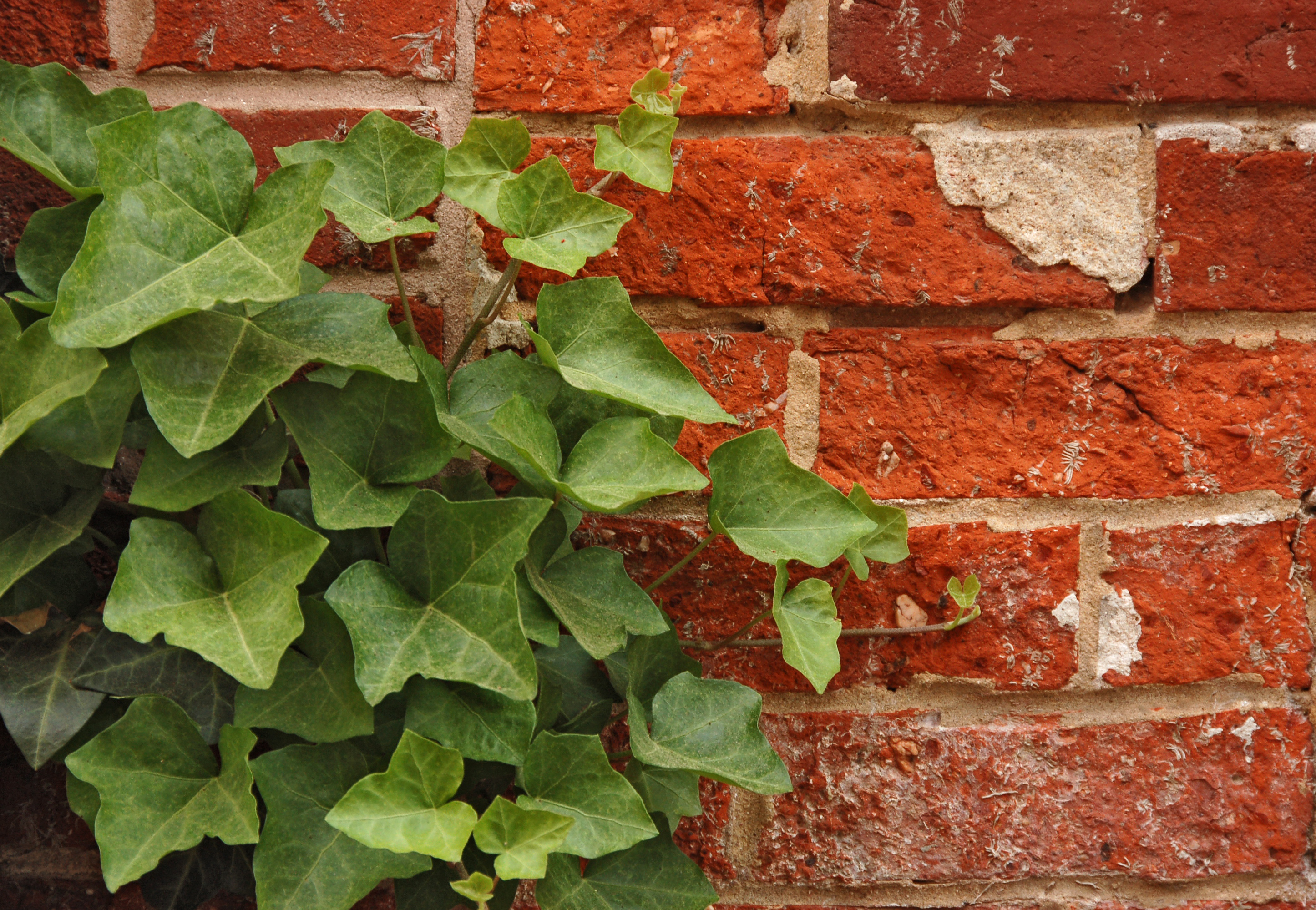Ivy plants secrete nanoparticles that help them to climb walls, scientists have discovered. The evergreen plants cling onto surfaces using tiny rootlets that spring out from their stems which are very tough to prise off. On the microscopic scale these rootlets end in fingers or disks, hundreds of micrometres long. And as Charles Darwin first reported in 1876 in his monograph Movements and habits of climbing plants: "the rootlets of the Ivy, placed against glass ... secrete a little yellowish matter".
 | |
| Photograph of English Ivy (Hedera helix) growing on a red brick wall. © Derek L. Ramsey |
But what this substance is, and how it helps ivy to climb, has remained unclear since Darwin's time. Mingjun Zhang of the University of Tennessee and colleagues grew Boston ivy on silicon and mica wafers, and analysed its secretions with atomic force microscopy. They found very uniform particles, 70nm across. The researchers then checked the composition of the particles with high-performance liquid chromatography/mass spectrometry (HPLC/MS). They picked out 19 organic compounds, which they suggest consist of long hydrocarbon tails and polar nitrogen, oxygen or sulfur-containing heads.
Zhang's team is now working out the mechanism by which the ivy produces nanoparticles - and he hopes to work out exactly how they help the plant stick to surfaces. He also plans to try forcing ivy to produce metallic nanoparticles - rather than synthesise them chemically. Many plants have already been used to grow nanoparticles - alfalfa, for instance, soaks up gold and silver to produce metallic nanoparticles, while extracts of camphor, lemongrass and aloe vera have been used to synthesise nanoparticles in the laboratory. But the idea that a plant would secrete nanoparticles naturally in order to help it climb is unique - and suggests a highly evolved biosynthetic pathway.
- Previous Satellites spot cholera
- Next How plants avoid the shade










Comments
Add a comment